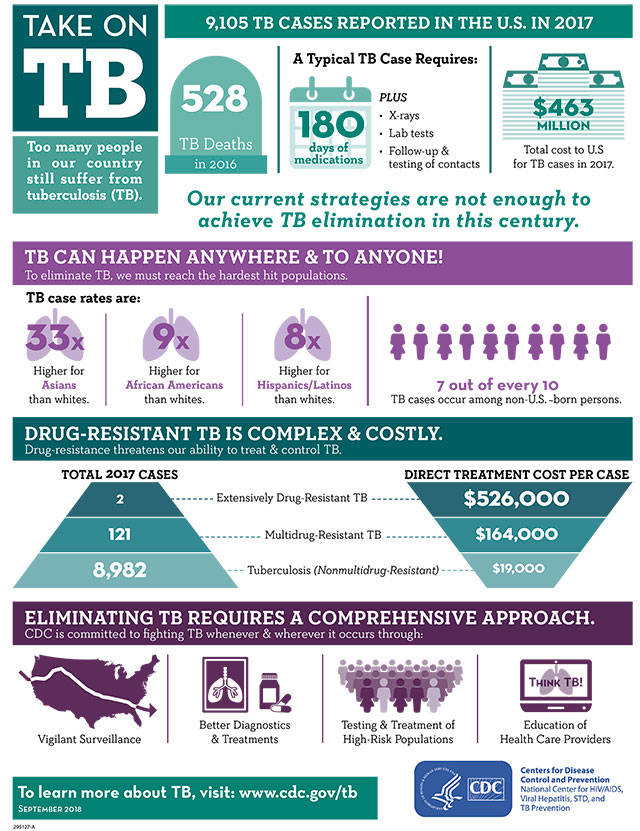Is eliminating tuberculosis (TB), the world’s leading infectious killer, possible?
That’s the question United Nations leaders took on at their first global conference dedicated to the fight against TB in September 2018. Their conclusion: it is possible, with a coordinated, global effort, and with more investment in diagnosis, treatment, research and development, and stronger public health systems.
Even though there are medications that can cure and prevent TB disease, too few around the world are currently able to get the treatment they need to make them well and prevent others from getting a disease that kills 4,500 people every day worldwide, and 1.6 million total in 2017 alone.
As we recognized World TB Day this past Sunday, we’re fortunate in the United States and here in King County to have TB programs that help to keep widespread outbreaks at bay.
“We are united with our partners across the world in committing to eliminate TB,” said Dr. Masa Narita, TB Control Director for Public Health – Seattle & King County. “Whether you live in King County, Kuala Lumpur or Kinshasa, everyone deserves to breathe free from the threat of this curable and preventable disease.”
PAST TB RATES
Public Health – Seattle & King County’s TB Control Program ensures that people with active TB disease are diagnosed and cured, and that others in contact with them who are at highest risk of infection are screened, so that disease does not spread.
For 2018, Public Health’s TB Control Program is releasing new King County summary statistics. Key findings include:The total number of TB disease cases dropped to 93 in 2018, from 97 in 2017.
TB disease rates in 2018 were at an all-time low in King County, but are higher than state and national averages.
86% of reported TB disease cases were in people born outside the United States, in places where TB is much more common.
Two TB disease cases were multi-drug resistant, which are more difficult and more expensive to treat.
In a concerning development, the number of reported TB disease cases for the first two months of 2019 are triple what we would expect based on recent years, with 24 cases. It’s not clear what is causing this increase and the TB Control Program will continue to monitor the situation.
TREATING LATENT TB INFECTION PREVENTS DISEASE
In addition to active TB disease, an estimated 100,000 King County residents have latent TB infection without symptoms, in which the TB bacteria is dormant and not contagious. Approximately one in 10 people with latent TB infection will develop active TB disease in their lifetime.
Healthcare providers can prevent a large number of active TB disease cases by identifying and offering treatment to people with latent TB infection. Working together, public health professionals and community healthcare providers are essential partners in controlling and ultimately eliminating TB.


